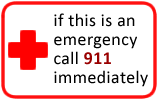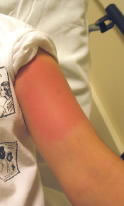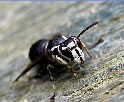Bee or Yellow Jacket Sting
Bee or Yellow Jacket Sting
Does this describe your child's symptoms? |
Click image for more info |
Definition
Local Reactions
Anaphylactic Reaction
|
If not, see these topics
First Aid:First Aid Advice for Anaphylaxis - Epinephrine (pending EMS arrival)
First Aid Advice for Anaphylactic Shock
|
When to Call Your Doctor |
Call 911 Now (your child may need an ambulance) If |
|
|
|
Call Your Doctor Now (night or day) If |
|
|
|
Call Your Doctor Within 24 Hours (between 9 am and 4 pm) If |
|
|
|
Call Your Doctor During Weekday Office Hours If |
|
|
|
Parent Care at Home If |
|
|
HOME CARE ADVICE FOR BEE OR YELLOW JACKET STING |
Try to Remove the Stinger (if present):
Only honey bees leave a stinger.
Use a fingernail or credit card edge to scrape it off.
If the stinger is below the skin surface, leave it alone. It will be shed with normal skin healing.
Meat Tenderizer:
Apply a meat tenderizer-water solution on a cotton ball for 20 minutes (EXCEPTION: near the eye). This may neutralize the venom and decrease pain and swelling.
If not available, apply aluminum-based deodorant or a baking soda solution for 20 minutes.
Local Cold: For persistent pain, massage with an ice cube for 10 minutes.
Pain Medicine: Give acetaminophen (e.g., Tylenol) or ibuprofen immediately for relief of pain and burning.
Antihistamine: If the sting becomes itchy, give a dose of Benadryl. (See Dosage chart)
Hydrocortisone Cream: For itching or swelling, apply 1% hydrocortisone cream to the sting area 3 times per day. (No prescription needed)
Expected Course: Severe pain or burning at the site lasts 1 to 2 hours. Normal swelling from venom can increase for 24 hours following the sting. The redness can last 3 days and the swelling 7 days.
Call Your Doctor If:
Develops difficulty breathing or swallowing (mainly during the 2 hours after the sting) (call 911)
Redness lasts over 3 days
Swelling becomes huge or spreads beyond the wrist or ankle
Sting begins to look infected
Your child becomes worse
And remember, contact your doctor if your child develops any of the "Call Your Doctor" symptoms.
Updated:
March 22, 2017











